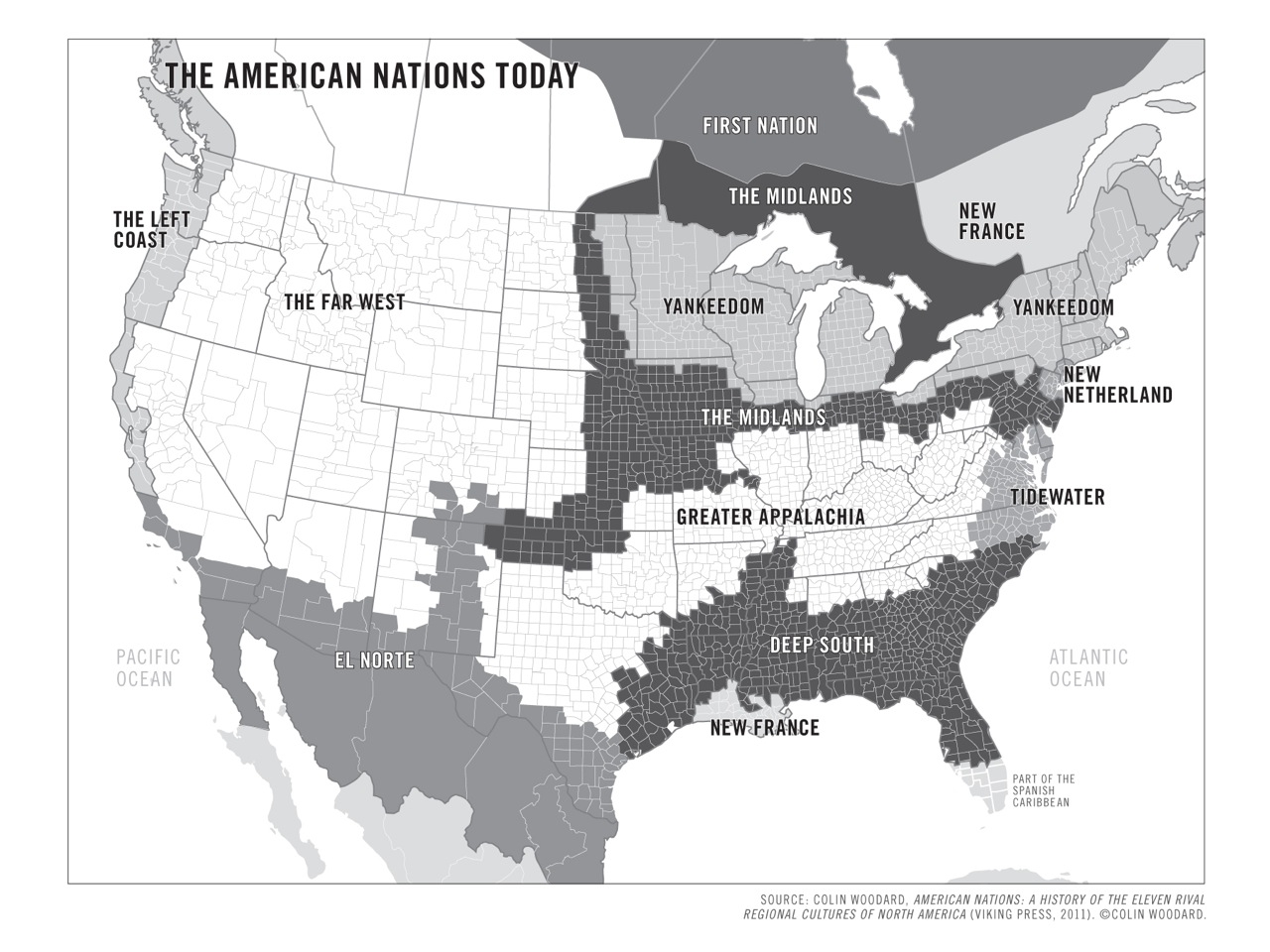I wrote in Pathetic Fallacy – Corporations that a pathetic fallacy — personifying what is not a person — masks reality with an idea and triggers false emotion from false perception.
Thinking of a nation as an entity with a will is as misleading as thinking that a corporation decides what to do. Nations and corporations are not beings with a mind of their own. They are artificial entities that enable real people, their leaders, to command resources and project power.
To see that a nation is a concept just like a corporation, consider nations to be a form of business. For example:
- The business known as England, where I grew up, was owned and operated as the Tudor family business from 1485 until 1603 when it was taken over by the business operated by the Stuart family since 1371 that was known as Scotland
- The USA business, where I have lived all my adult (hah!) life, resulted from the hostile takeover of what we term the “Indian nations.”

But what actually is a nation? There are many forms of nation, just as corporations are only one form of business, so there are many definitions :
- “A large group of people who share a common language, culture, ethnicity, descent, or history“
- “A large body of people, associated with a particular territory, that is sufficiently conscious of its unity to seek or to possess a government peculiarly its own“
- “A large area of land that is controlled by its own government“
The USA is not a nation of the first kind since we do not have a common language — there are 45 million Spanish-speaking Americans — or a common culture, ethnicity or descent. It is also not a nation of the second kind, not unified in a deep way, as this election season makes so clear.
As Colin Woodard’s excellent historical analysis shows, the USA is better understood as eleven nations, each with a different culture.

So the USA is a nation of the third kind, one with the same system of government for more than two centuries whose territory kept expanding until it spanned its ocean borders.
What about other nations, those in the Middle East, for example?
A map of their territories suggests that:
- Large ones on the periphery — Turkey, Iran, Saudi Arabia and Egypt — are likely to fight over those in the center — Iraq, Syria, Jordan, Israel and Lebanon
- Iraq is likely to want to control Kuwait to get ocean access
- Saudi Arabia is likely to want to control Kuwait, Bahrain, Qatar, the UAR, Oman and Yemen

But we are misled by our delusion that nations are natural entities, especially Saudi Arabia, whose eastern and western coastal borders make it seem to be a nation of the third kind like the USA.
In fact, the territory now known as Saudi Arabia only came into existence in 1932. It is, to continue the business analogy, an Ibn Saud family-owned oil production business. Their administration happens to require the people in that territory to conform to an ultra-conservative form of Sunni Islam.
The territory now known as Iran, however, part of whose borders are also coastal, is a nation of the first kind. It has a distinct ethno-linguistic population and a common culture formed by operating from 530 BC to 1979 as the Persian Empire. Its secular dynastic rule was then overthrown by Ayatollah Khomeini who established a fundamentalist Shia Islam theocracy.
The territory now known as Iraq, with no natural borders, has an even longer history as Mesopotamia. It is where the world’s first cities formed around 5300 BC. Unlike Iran, the majority of Iraq’s people are Arabs although there are also Kurds where it borders Turkey and Iran. Mesopotamia was conquered by Muslim Arabs in the 7th century, later absorbed into the Ottoman Empire, briefly stable under Saddam Hussein after 1979 but its territory is now battled over by an elected government and unrecognized new nations, Kurdistan and Islamic State.
The territory now known as Turkey was the center of the Ottoman Empire from 1299 to 1922 when it was re-established by Kemal Ataturk as a secular democracy whose natural borders are coastal.
And the territory known as Egypt, with desert and coastal borders, was managed as a kingdom for three thousand years, then by the Arab Muslim Empire for six centuries and as part of the Ottoman Empire from 1517 until that empire fell. Its monarchy was overthrown in 1952 by Gamal Nasser.
So Iran, Egypt and Turkey each has a long history during which an ethno-linguistic majority established a culture in a territory defined largely by coastal borders. Iraq also has a long history but lacks natural borders and has a divided population. Saudi Arabia lacks agricultural potential and has only been a nation since oil was discovered. The government of all five nations is in fact quite new.
The future of territories is determined to a great extent by geography. The behavior of people is influenced by cultures that diverge over time. But the behavior of what we imagine to be nations is decided not be those conceptual entities but by individuals such as Ibn Saud, Ayatollah Khomeini, Saddam Hussein, Kemal Ataturk and Gamal Nasser.
That’s a critical distinction because a territory and its people can, when characterized as a nation, inspire fear, hatred and violence, replacing what is real — people like us — with fantasy, an alien mass against which appalling violence seems necessary and right.
Terrible things happen when we condemn entire populations whose existence in the form of a nation is the product of our imagination.
We teach children who crush their thumb with a hammer not to fly into a rage at the hammer. We must see for ourselves that it is not corporations and nations that take action but their leaders.
